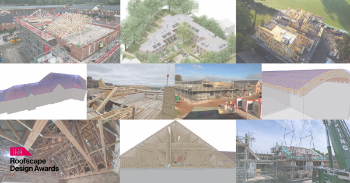Mastic sealant
Mastic is commonly used on construction projects as an adhesive and sealant. It is a popular choice where one surface needs to be adhered to another in a durable bond, or where the area needs to be protected.
The most common types of material that mastic sealant can be adhered to include timber, aluminium, steel, marble, glass and various types of board, although it can be used on nearly all materials.
Examples of uses for mastic sealant include:
- Bonding ceiling, wall and floor tiles.
- Bonding plywood panels.
- As a joint-sealer for windows and doors.
- Sealing the area around bathtubs and other sanitary appliances.
- As a filler for cracks in masonry and concrete.
Mastic can be used outside because of its water-resistant, temperature-resistant and UV-resistant properties. It is also capable of resisting corrosion which makes it suitable for use with metals.
Although mastic will usually resist some applied pressure, it is not flexible enough to accommodate large movements. Due to its viscosity, it is best applied to thick rather than thinner areas of application, such as large gaps and cracks. Before applying mastic, the area may not require priming, but it should be clean and dry. It is best applied by using a caulking gun.
[edit] Related articles on Designing Buildings Wiki
Featured articles and news
Moisture, fire safety and emerging trends in living walls
How wet is your wall?
Current policy explained and newly published consultation by the UK and Welsh Governments.
British architecture 1919–39. Book review.
Conservation of listed prefabs in Moseley.
Energy industry calls for urgent reform.
Heritage staff wellbeing at work survey.
A five minute introduction.
50th Golden anniversary ECA Edmundson apprentice award
Showcasing the very best electrotechnical and engineering services for half a century.
Welsh government consults on HRBs and reg changes
Seeking feedback on a new regulatory regime and a broad range of issues.
CIOB Client Guide (2nd edition) March 2025
Free download covering statutory dutyholder roles under the Building Safety Act and much more.
AI and automation in 3D modelling and spatial design
Can almost half of design development tasks be automated?
Minister quizzed, as responsibility transfers to MHCLG and BSR publishes new building control guidance.
UK environmental regulations reform 2025
Amid wider new approaches to ensure regulators and regulation support growth.
The maintenance challenge of tenements.
BSRIA Statutory Compliance Inspection Checklist
BG80/2025 now significantly updated to include requirements related to important changes in legislation.
Shortlist for the 2025 Roofscape Design Awards
Talent and innovation showcase announcement from the trussed rafter industry.






















